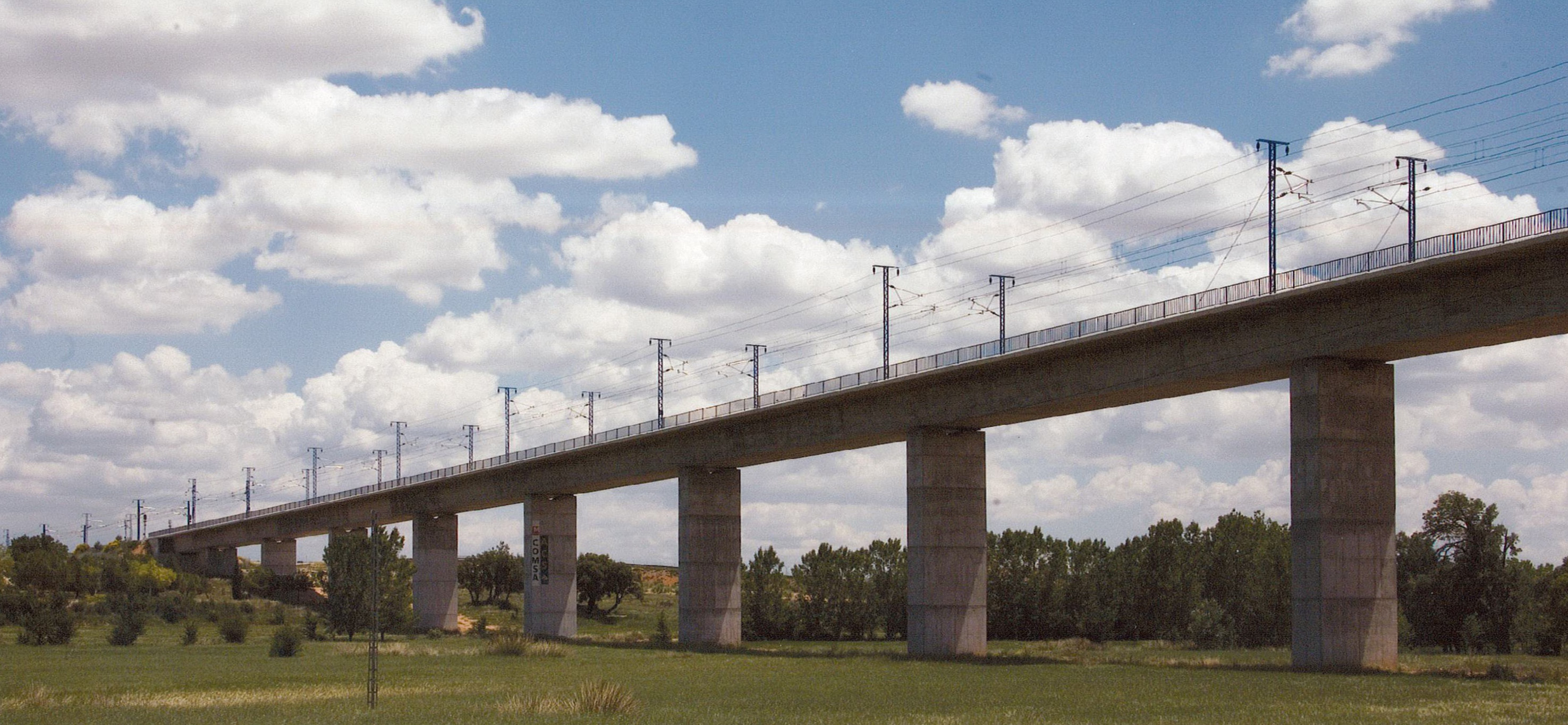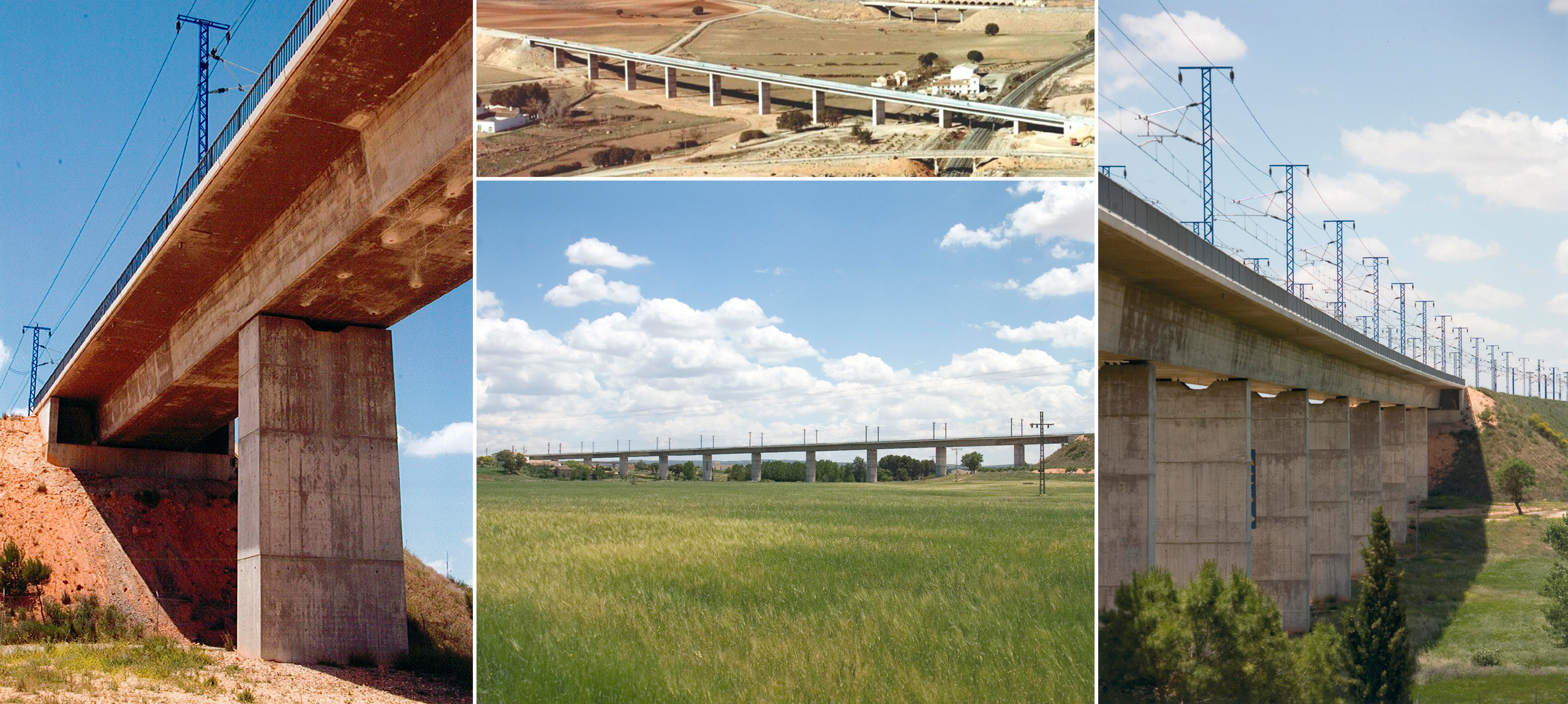
| HSL Madrid – Alicante. Alpera By-pass. Alpera Viaduct | |
| Alicante, España | |
| Typologie | Railway Bridges |
| Date | Avril, 2001 |
| Mission | Detailed design and construction support |
This structure consists of 11 spans of 30.00m + 9 x 45.00m + 30.00m. The bridge is 13.00m wide therefore permitting a two-way high-speed railway line.
It is a post-tensioned, continuous box-section beam. The depth of the deck is a constant 3.20m which is 1/14 of the main span.
The great height of abutment 2, approximately 17.0m, and the importance of horizontal actions induced by train breaking and seismic effects condition the chosen abutment typologies. From an economic and a structural behavioral point of view, it seems more adequate that these horizontal forces of breaking and seismic effects should only be transferred to the lower abutment 1. Hence the reason for choosing the closed abutment type for the lower one (E-1) and the open version for the upper one (E-2).
The open abutment 2 is composed of two battered shafts which are placed directly below the supports of the deck and founded directly into the ground. In order to avoid the transmission of large horizontal forces from
deck to abutment, support employ pot bearings was chosen which allow the deck to slide once the horizontal force exceeds the value of Teflon friction, that is, 5% of the vertical load.
It is a post-tensioned, continuous box-section beam. The depth of the deck is a constant 3.20m which is 1/14 of the main span.
The great height of abutment 2, approximately 17.0m, and the importance of horizontal actions induced by train breaking and seismic effects condition the chosen abutment typologies. From an economic and a structural behavioral point of view, it seems more adequate that these horizontal forces of breaking and seismic effects should only be transferred to the lower abutment 1. Hence the reason for choosing the closed abutment type for the lower one (E-1) and the open version for the upper one (E-2).
The open abutment 2 is composed of two battered shafts which are placed directly below the supports of the deck and founded directly into the ground. In order to avoid the transmission of large horizontal forces from
deck to abutment, support employ pot bearings was chosen which allow the deck to slide once the horizontal force exceeds the value of Teflon friction, that is, 5% of the vertical load.






